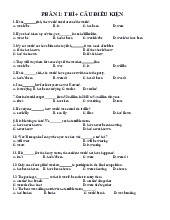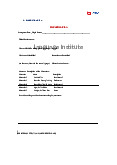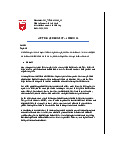


Preview text:
Current status of wildlife
- The planet has recognized 8,300 animal breeds. Of all 8% of
them are extinct and the remaining 22% are at risk of extinction
- Wildlife species are declining at an alarming rate in tropical areas.
- Wild populations of wild species of mammals, birds,
amphibians, reptiles and fish have decreased by an average of 69% since 1970.
- Between 1970 and 2018, monitored wildlife populations in the
Asia-Pacific decreased by an average of 55%
- In Africa, Latin America and the Caribbean is 94%.
- The number of wild animals is just over a third of what it was in
1970 with a decline rate of 2% per year and shows no signs of slowing down.
Cause of disappearance of some species
- Humans are behind the current rate of species extinction, at least
100–1,000 times higher than nature's expected
- Human development and farming, inappropriate exploitation, the
introduction of invasive species, pollution, climate change and disease
- About 60% of infectious diseases in humans originate from
animals. The above number has increased to 75%, with worrying
epidemics such as Ebola, HIV, bird flu, Zika, and plague...
- Due to human hunting and consumption of wild animals,
biodiversity is reduced, causing the risk of creating a 6th extinction wave.
Adverse consequences of the extinction of some species
- Loss of genetic diversity: This is an important aspect when taking into
account the vulnerability of species. All components of the habitat
reduce the chance of predation, gene exchange, reproduction, etc.
- The complete extinction of species causes severe damage to the environment.
- Destruction of ecosystems and natural resources
- Create a global biological disaster
- Causes plants to perish, but also leads to narrowing of living land, water, and oxygen
- Create an irreversible chain reaction
The measure of conserving wildlife
Developing protective areas such as national parks, and wildlife
sanctuaries to protect the animals in their natural habitat.
The endangered and vulnerable species can be kept in captivity in
places such as zoos and bred to increase their population.
The cutting of forests should be strictly prohibited. It is an abode of a variety of wild animals.
Hunting of wild animals should be banned.
Educate people through print and electronic media about the need for wildlife conservation.
Establish wildlife clubs in schools to raise awareness about the
importance of wildlife conservation.




